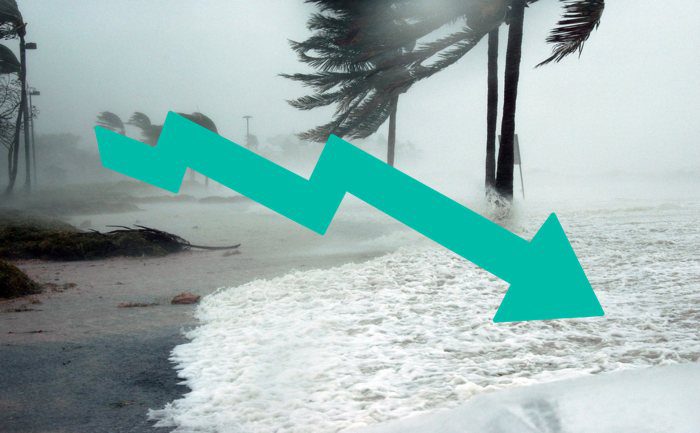FloodSmart Re cat bond trades down on hurricane Ian storm surge fears

So far, major hurricane Ian’s approach to the west coast of Florida and the Tampa Bay region has not stimulated a significant amount of catastrophe bond trading, with the secondary market relatively quiet. Except for one telling trade that shows investor nerves over potential storm surge impacts are rising.
When major hurricanes are a few days from landfall and the forecast models begin to get some consensus over the eventual impact to insurance and reinsurance markets, we can sometimes see a flurry of trading activity in the secondary market for catastrophe bonds.
It’s not the most fluid secondary market for securities in the world, being still completely manual and requiring expert traders to match buyers and sellers appetites.
But it functions well and provides a venue for offloading at-risk, exposed and distressed catastrophe bonds, at discount prices, to other investors or cat bond fund managers, when events threaten.
So far, our secondary market cat bond trader sources state that very little is happening, with a wide gulf between the price sellers would like to achieve and that buyers are willing to pay.
Which makes it very hard for trades to get executed, as broking desks can’t match potential sellers with any buyers at this time.
But there is one case of a catastrophe trade that has been completed and it looks definitely to have been stimulated by the approach of hurricane Ian.
This was a trade of more than a million dollars worth of the Class A tranche of notes from the FloodSmart Re Ltd. (Series 2021-1) catastrophe bond, one of the more risky of the tranches of FEMA’s catastrophe bonds that cover the National Flood Insurance Program (NFIP).
The notes provide the NFIP with collateralized and capital market investor backed reinsurance against flood losses from named storm events, including from storm surge.
In the case of this trade, these notes changed hands for just 80 cents on the dollar, so 20% below par pricing, suggesting the seller just wanted to get any exposure to hurricane Ian’s storm surge out of its cat bond portfolio while the storm approaches.
At issue, these FloodSmart Re 2021-1 Class A notes would have attached at $7 billion of losses to the NFIP.
Tampa Bay is seen as the third most exposed US city to storm surge, with modelled scenarios clearly showing a major event could drive billions of flood costs to the NFIP.
Add to that the fact that hurricane Ian is expected to widely drop 10 inches of rainfall, with potential storm maximums of 20 inches seen as more likely to stay offshore, but perhaps raising the flood risk even more.
So it seems this one investor, or cat bond fund, that held this slug of FloodSmart Re 2021-1 cat bond notes just isn’t prepared to bear that risk and was willing to sell off the notes at a roughly 20% to par discount.
As hurricane Ian passes Cuba and begins to set a course for the Florida coast over the next 24 hours, we could see some more catastrophe bond trading emerge.
But, as ever, matching seller and buyer appetites may not be easy.
Also, as hurricane Ian emerges into the Gulf of Mexico it could intensify again and also grow, while setting its course for eventual landfall.
Meaning the risk of impacts could actually look even worse, once the hurricane has a chance to regain structure after crossing Cuba, suggesting it could be a busy day or two of calls for the cat bond traders, but perhaps not the most fruitful in terms of trades.
Read our latest on hurricane Ian here.






